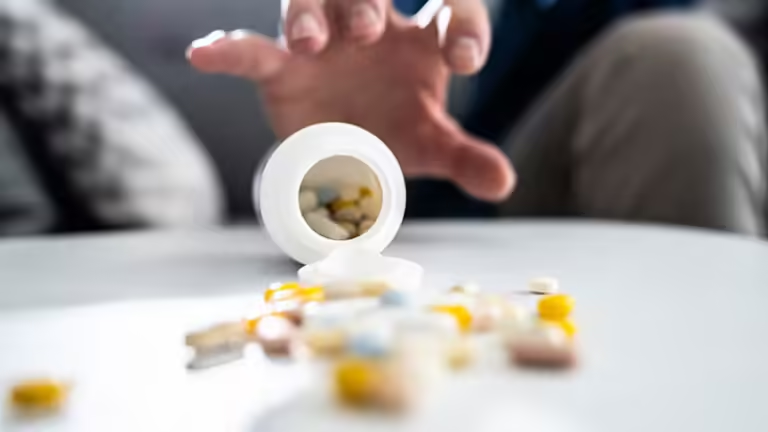Recovering from opioid dependency is no small feat. Withdrawal symptoms can feel overwhelming, making the journey to sobriety challenging both physically and emotionally. However, with the right strategies and support, it’s entirely possible to navigate this difficult phase safely. In this article, we’ll explore effective methods to manage opioid withdrawal, ensuring a smoother path to recovery.
Understanding Opioid Withdrawal
What is Opioid Withdrawal?
Opioid withdrawal occurs when someone who has been using opioids regularly reduces or stops their intake. This reaction stems from the body’s dependence on these substances to function. When opioids are suddenly removed, the body struggles to adjust, leading to withdrawal symptoms.
Common Symptoms of Withdrawal
Withdrawal can manifest in various ways, including:
- Physical Symptoms: Sweating, nausea, vomiting, diarrhea, muscle aches, and fever.
- Emotional Symptoms: Anxiety, depression, irritability, and mood swings.
These symptoms often vary in intensity depending on the duration and level of opioid use.
Check Out:
Histopathology Overview: Understanding Its Role in Diagnosis
Duration of Withdrawal
Withdrawal typically occurs in two phases:
- Acute Withdrawal: Lasting about 5-10 days, characterized by intense physical symptoms.
- Prolonged Withdrawal: Emotional and psychological symptoms can linger for weeks or months.
Factors like age, health, and the type of opioid used influence the withdrawal timeline.
Preparation for Managing Withdrawal
Seeking Medical Advice
Consulting a healthcare professional is crucial before starting your recovery journey. Medical detox programs provide supervised environments to ensure safety and minimize risks.
Setting Up a Support System
Recovery isn’t something you have to do alone. Engage family, friends, or professional counselors to build a network of support. Joining recovery groups can also provide valuable connections.
Creating a Safe Environment
Prepare your surroundings by removing potential triggers. Stock up on essentials like healthy snacks, water, and comfort items to create a healing-friendly space.
Medical Approaches to Withdrawal Management
Medications to Ease Symptoms
Medications such as methadone, buprenorphine, and naltrexone are commonly prescribed to alleviate withdrawal symptoms. These options help reduce cravings and stabilize the body’s response.
Supervised Detox Programs
These programs offer professional oversight, reducing the risk of complications. Inpatient programs provide 24/7 care, while outpatient options allow for flexibility.
Alternative Therapies
Therapies like acupuncture, massage, and mindfulness have shown promise in easing withdrawal symptoms. They complement traditional treatments by reducing stress and promoting relaxation.
Lifestyle Changes for Better Recovery
Nutrition and Hydration
Eating nutrient-rich foods and staying hydrated can help your body heal faster. Focus on lean proteins, whole grains, and fruits to replenish lost nutrients.
Regular Exercise
Light physical activity, such as walking or yoga, can boost endorphins and improve mood. Exercise also helps combat fatigue and muscle tension.
Establishing a Routine
Creating a daily schedule provides structure and reduces feelings of chaos. Balance activity with plenty of rest to support recovery.
Mental Health Support During Withdrawal
Coping with Anxiety and Depression
Therapies like cognitive behavioral therapy (CBT) can address negative thought patterns. Mindfulness techniques also help manage anxiety and promote emotional balance.
Avoiding Triggers
Identify situations or people that may tempt you to use opioids. Plan ahead with strategies to avoid or manage these triggers.
Engaging in Support Groups
Recovery groups, such as Narcotics Anonymous, offer a sense of belonging and shared experience. Regular meetings can reinforce your commitment to sobriety.
Natural Remedies for Withdrawal Symptoms
Herbal Supplements
Valerian root, passionflower, and kava are popular for reducing anxiety and promoting relaxation. Always consult a doctor before trying supplements.
Aromatherapy and Relaxation Techniques
Essential oils like lavender and chamomile can ease stress. Pair these with breathing exercises to create a calming routine.
Using Heat Therapy
Warm baths or heating pads soothe muscle aches and promote relaxation. Adding Epsom salts to baths can enhance the effect.
The Role of Professional Help in Recovery
When to Seek Medical Intervention
Severe symptoms, such as dehydration, confusion, or heart palpitations, require immediate medical attention. Don’t hesitate to seek help when needed.
Combining Therapy with Medication
Integrated care that includes both therapy and medication improves recovery outcomes. Professional guidance ensures a holistic approach to healing.
Long-Term Recovery Plans
Setting achievable goals and maintaining ongoing support systems are vital for sustained sobriety. Regular therapy sessions and check-ins help keep you on track.
Common Challenges and How to Overcome Them
Dealing with Cravings
Cravings are natural but manageable. Distract yourself with hobbies, exercise, or connecting with a friend when cravings strike.
Managing Setbacks
Relapse doesn’t mean failure. Treat it as an opportunity to learn and adjust your strategies for staying sober.
Staying Motivated
Celebrate milestones, no matter how small. Remind yourself of the reasons you chose recovery and the benefits it brings.
Conclusion
Managing opioid withdrawal is challenging, but with the right tools and support, it’s achievable. From medical treatments to lifestyle changes and mental health strategies, each step brings you closer to a healthier, substance-free life. Remember, recovery is a journey, not a sprint, and every effort you make is a step toward success.
FAQs
1. What are the safest medications for opioid withdrawal? Methadone, buprenorphine, and naltrexone are commonly prescribed for managing symptoms.
2. How long does opioid withdrawal typically last? Acute withdrawal lasts 5-10 days, while prolonged symptoms can persist for weeks or months.
3. Can natural remedies completely replace medical treatment? Natural remedies can complement medical care but should not replace professional guidance.
4. What support networks are best for recovery? Groups like Narcotics Anonymous and online forums offer valuable community and support.
5. How do I handle relapse during recovery? View relapse as a learning opportunity and seek help to refocus on your recovery plan.


